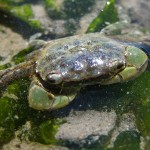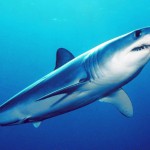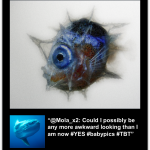The larvae of eels and other related species are called small heads or in the fancier Greek, Leptocephalus. The video above should give you some insight into this moniker. Unlike fish larvae, Leptocephali can grow quite large from a few inches to well over a foot in length. Also unlike fish larvae, Leptocephali do not feed on plankton but rather feed on microscopic particles in the water called marine snow. As can be seen in the video above they are transparent, undoubtedly an adaptation to avoid predation. Indeed, Leptocephali do not possess red blood cells which could be easily seen in a transparent body. Red blood cells are not acquired until the next phase of their life.
6 Replies to “TGIF: Eel larvae”
Comments are closed.






awesome video! I’m work with American eels for my master’s degree so I love seeing other leptocephalus larvae!!
Wow! Thanks for that clip, biology is endlessly fascinating.
I have to ask: how the hell do they transport oxygen?
I thank the person who took the picture of the live leptocephalus. It is really wonderful to be able to see a live, gracefully moving transparent leptocephalus as a past researcher on leptocephal. I saw leptocephali hatching from the eel eggs about centimeter long and alive for a few days and finally died in the lab glass containers. But this picture really great and I have never seen anything like this before.
Thank so much for feasting my eyes. I wolul like to forward this to my fellow leptocephaloligists. Solomon
After posting the comment on the beautiful leptocephalus, I was tempted to identify the leptocephalus as a past researcher on them. It looks like it is the leptocephalus of a Muraenid, such as a Moray eel. The environment also is suggestive of Moray eels. I could be wrong as this is not based on the scientific data such as the myotome count etc. Good luck to others who might like to take a guess.
Solomon Raju.